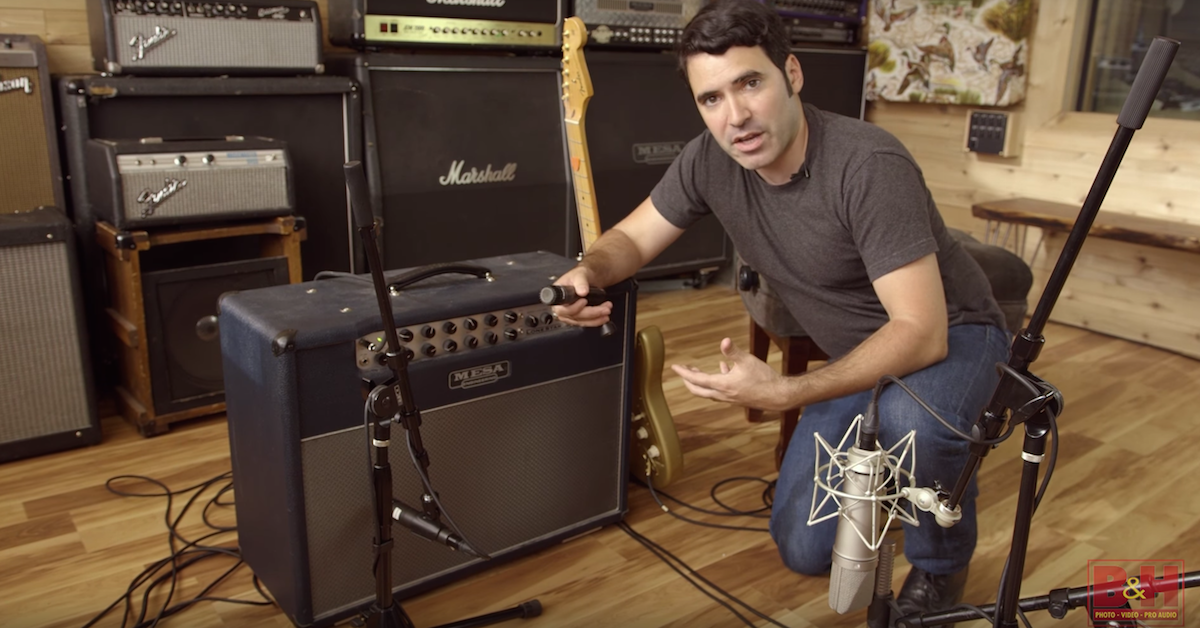Mic Roundup Part 3: Little Brother Mic Lineup
Why little brother? Well, each of these mics is kind of a half priced version of a more expensive microphone of the same brand.
Starting this line, we have the AKG 214, and the AKG 214 is kind of the little brother of the AKG 414. It’s about half the price, and it’s missing some of the bells and whistles. It doesn’t have any of the polar pattern selection you’d find on the AKG 414. It has a slightly different tone as well. I would say there’s maybe a little bit more kind of top end here on the AKG 214 than there is on the classic AKG 414 XLS. All around a nice mic for about half the price with a similar tone.
The next one on down the line is a similar idea. This is the Mojave MA-50, and for about $500, it’s half the price of its closest relative in the Mojave line. This one doesn’t really have any bells and whistles. There’s no polar pattern select, there’s no low frequency roll off. Just a good sounding mic at a fairly affordable price point.
To me, this one has a lot of articulation, a lot of clarity, and if you want a good condenser mic that has a lot of bang for the buck and doesn’t have the muss and fuss of a power supply that you’d find in a tube condenser, the Mojave MA-50 could be a great way to go.
Next one down this line is the Telefunken Copperhead, and this is one of the most affordable mics from Telefunken, but it may be among their best in an odd way. It’s almost half the price of its bigger brothers, the AR-51 and the AK-47, and its design is meant to try to take kind of the best of both of those worlds, giving you the kind of upper-mid range push of the AK-47, the extended top end of the AR-51, all in one package. There’s no polar pattern select on this, there’s no low frequency roll off, no bells and whistles. Just a really good sounding microphone. We actually did an interview with Chris Zane in our B&H interview series, and he said when Telefunken sent him their whole new line, this was the one that really attracted his ear the most.
Really nice sounding mic for the price point.
The last one we’re going to hear in an application it wasn’t really designed for. This is the Royer 101. It’s a ribbon mic. You can hear on this one, it’s a lot darker than the others, and it’s kind of the little brother to the Royer 121. The Royer 121 costs about twice as much as this, but it also has a slightly different tonal character.
The 121 has kind of a mid-range push, and a nice hump in the low end around 50Hz, so it can sound pretty throaty and full bodied and fat on electric guitar cabs. The Royer 101 has a little bit more of a neutral response. It doesn’t have as much of that kind of mid-range push, it doesn’t have that big hump down in the bottom end. It has a kind of more neutral mid-range and a more neutral low end, and it actually has a little bit more of an extended top end than the Royer 121.
If you put this guy on an electric guitar cab, you get a little bit more clarity, a little bit more of an open and clean sound compared to that kind of throaty, vintage mid-range push of the Royer 121. Really nice mic, slightly reminiscent of the old Royer SF1, which I was a big fan of, and about half the price of a 121 without as much of a signature sound.
I’m not going to bother putting up all of these mics on the same sound source, because they all have such a wildly different tonal character, and they’re designed for such different purposes, but I think just from the sound of my voice, you can get an overall impression of the frequency response and tonal characteristics of each of these mics.
One more time down the line, the Royer 101, about half the price of its big brother, the Royer 121. Then we’ve got here the Telefunken Copperhead. Once again, about half the price of its bigger brothers, the AK-47 and the AR-51. Then we have the Mojave Audio MA-50. Really affordable mic compared to the more expensive Mojave Audio MA-201 and MA-301. Then lastly, here we have the AKG 214. This is a much more affordable take on the AKG 414 without a few of the bells and whistles. Similar sound with maybe a little bit more top end than the AKG 414 XLS.
Alright, thanks for taking the tour through these little brother mics with me. This has been Justin of Sonic Scoop, coming at you courtesy of B&H once again here at Bronze Studios. Thanks for having us, see you next time.





